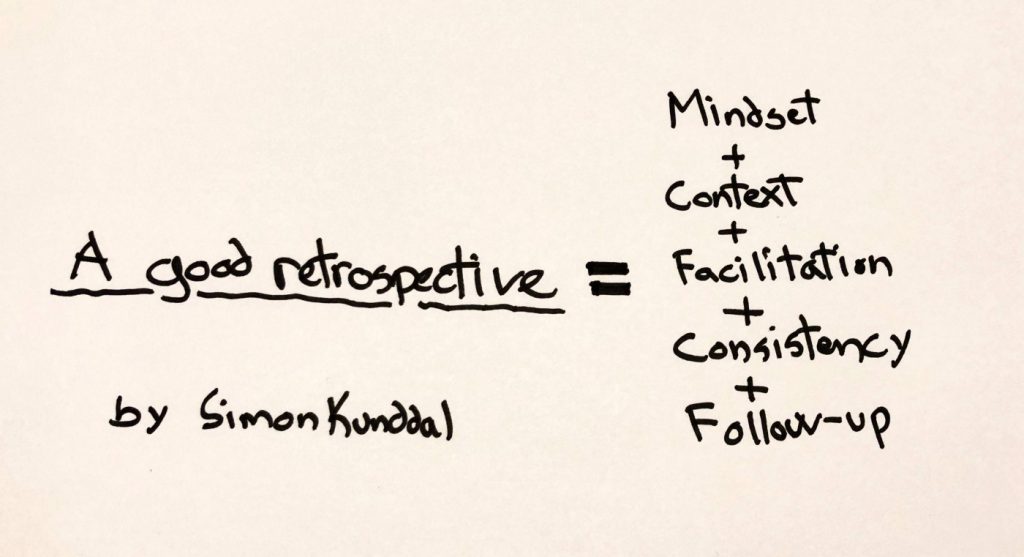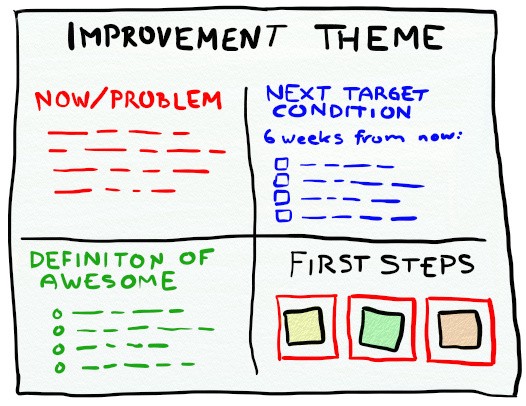
The Retrospective Formula: Following up — Part 5
If you have not yet read part 1 to 4 of this article series, I highly recommend checking it out, as this will help the understanding of the coming section.
In part 1 of the Retrospective Formula, I explained the importance of having the right mindset when participating in a retrospective. Part 2 was about understanding the environment and circumstances in which the team operates, ensuring the right focus at the right time. Part 3 addressed some unique elements towards facilitation that you may want to be aware of — e.g., creating a Safe space. Part 4 was about the effects of being consistent. And, in this final section I will explore the importance of following up on the retrospective event.
Following up — do not forget
The final principle for a great retrospective is what happens after the retrospective. We are all good at identifying the problem, but we also need to make a counteraction or implement the improvement. The activities to reach the improvement will often require different skills than the traditional, and the development team member might disapprove. As a consequence, it will not be the first item to pull. Here, a Scrum Master can help create focus on this during e.g., the Daily Scrum.
Add it to the Sprint backlog
The updated Scrum Guide from 2017 has a high focus on this, as it now requires you to put a sprint backlog item from the retrospective into the Sprint plan — (adjusted again in 2020). This will help create awareness and transparency for the fact that work needs to be done in order to improve. Treat it as important as any other development item in the Sprint backlog.
You can either present it at the sprint review event if it is relevant for all the participants, or you can spend the first part of the retrospective following-up. If it was successfully implemented, you might have a small celebration. If the experiment did not lead to any improvement, you should have a short feedback session on the root cause of the failure of the experiment. Did you spent insufficient time preparing it in the last session? Was it not relevant anymore? You can also keep a diary as mentioned in part 4.
Improvement Theme — one small step
If the improvement is more complex, it may take longer time to reach the outcome. An alternative way of working with, driving and implementing improvements is to use more concrete improvement frameworks like the Toyota Kata or Popcorn. Both are great approaches. The Toyota Kata, or in a simplified version, Improvement Theme, is a simple yet powerful visualization tool on how to break down the Improvement in tangible and realistic steps. These are then handled in the coming sprint. You can read more about the Improvement Theme here:

The Retrospective formula — Does it all add up?
This article series was my first humble attempt at sharing some of the learnings I have gathered throughout the last 10 years working with both the Scrum framework and the Agile mindset. As stated in the introduction of part 1, I have witnessed too many failed and boring retrospectives that generated close to no output or outcome. I believe retrospectives require much more attention from both the facilitator and participants than what we see today.
This formula will not make every retrospective the best ever retrospective. The goal of the article series is to provide perspective, general principles and tools that can prove relevant for you as facilitator. Further, it can assist teams that struggle with getting value out of the event, instead of skipping it. This formular is not static, which is an important point to make. As I too keep learning, meet new people, new teams, and continuously improve my understanding of the dynamics and importance of the retrospective, so too will the formula evolve with me.
How does your retrospective formula look like? Feel free to share it in the comment section